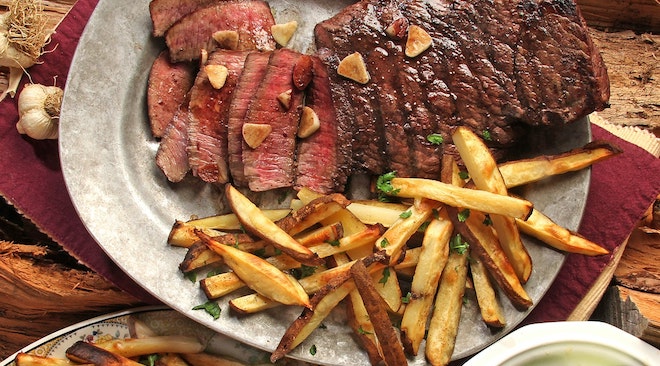A Guide to Foraging Wild Berries
Last Updated on October 12, 2023
Foraging for wild berries is not only a fun and rewarding activity but can also provide a source of delicious and nutritious food that is straight from nature itself. This beginner-friendly guide covers everything you need to know about identifying, harvesting, and preparing wild berries for consumption.
Besides foraging for berries, you can also explore other wild edibles in nature, such as wild herbs or cauliflower mushrooms. Remember to apply the same safety precautions and identification guidelines when foraging for these mushrooms.
An Overview of Wild Berry Species
There are many types of wild berries found across various regions, each with unique characteristics and flavors. Here, we’ve provided a breakdown of some popular wild berries:
Blackberries: Found throughout North America, Europe, and Asia, these berries are sweet and juicy.
Raspberries: With a similar appearance to blackberries, raspberries are less shiny and have a more distinct and slightly tart flavor.
Blueberries: Native to North America, these berries boast a sweet and slightly tangy taste, often found in wooded and marshy areas.
Salmonberries: Found in coastal areas of western North America, these orange to red berries have a mild, sweet taste.
Elderberries: Dark purple or black in color, these berries have a tart-sweet taste and are often used in jams, syrups, and wines.
Safe Harvesting and Identification
It’s vital to practice proper identification and safety precautions when foraging for wild berries. Always ensure you have positively identified a wild berry species before consuming it. When in doubt, consult a local expert or a reputable field guide. Avoid gathering berries near roads or polluted areas to minimize exposure to contaminants and handle berries gently to prevent bruising or damage. Be aware of wildlife and respect their habitat while foraging.
Foraging Equipment and Gear
Setting off on a wild berry foraging trip requires some essential gear to make the experience more enjoyable and efficient. Equip yourself with a sturdy pair of shoes or boots to navigate the terrain, a wide-brimmed hat and sunscreen for sun protection, and a long-sleeved shirt and pants for a shield against insects or thorny plants. Bring along a trustworthy field guide or a smartphone with internet access for identifying wild berries on the go. Finally, carry a basket or reusable bag to hold the harvested berries without crushing them.
The Ethical Foraging Principle
While foraging can be an enjoyable activity, it’s essential to follow ethical principles to promote sustainability and maintain a healthy ecosystem. Adhere to the ‘Leave No Trace’ guidelines by avoiding damaging plants or trampling vegetation. Take only the berries you need, and avoid overharvesting, ensuring that there’s enough left for other foragers and wildlife. When foraging on public lands, be aware of the rules and regulations concerning the harvest of wild edible plants, and always obtain permission from private landowners before foraging on their property.
Health Benefits
Not only do wild berries offer a delicious and refreshing taste, but they also provide numerous health benefits. They are rich in antioxidants, such as anthocyanins, which protect cells from oxidative damage and reduce inflammation. Wild berries are also an excellent source of vitamins, namely vitamin C, which supports the immune system and aids in maintaining healthy skin. Furthermore, they are abundant in dietary fiber, regulating digestion and blood sugar levels. By incorporating wild berries into your diet, you can enjoy their vibrant flavors while reaping their health benefits.
Harvesting Techniques
Maximize your foraging experience with these effective harvesting techniques. Gently hold the berry between your thumb and index finger, and give it a light twist to pluck it from the plant. Always harvest ripe berries, as they are easier to remove from the plant and taste better. Collect berries in a shallow container to prevent crushing. Remember to leave some berries behind for wildlife and future foragers.
Preserving Your Harvest
Extend the shelf life of your wild berries with these preservation methods:
Freezing: Rinse and pat dry your berries, arrange them in a single layer on a tray, and freeze. Once frozen, transfer them in airtight containers or freezer bags.
Canning: Use a standard water bath canning method, and follow a tested recipe to create jams, jellies, or preserves.
Drying: Dehydrate berries using a food dehydrator or an oven set at a low temperature.
Preparing Wild Berries for Consumption
There are countless ways to enjoy your foraged wild berries. You can add them to pancakes, muffins, or scones for a burst of natural sweetness. Blend wild berries into a delicious smoothie or juice. Make sauces, compotes, or pie fillings, or create a show-stopping fruit salad using a mix of wild and cultivated berries.
Foraging wild berries is an excellent way to reconnect with nature and enjoy its delectable bounty. By practicing safe identification and harvesting techniques, you’ll be on your way to savoring the sensational flavors that wild berries have to offer. Remember to respect the environment and always leave some berries behind for our fellow creatures. Happy foraging!







